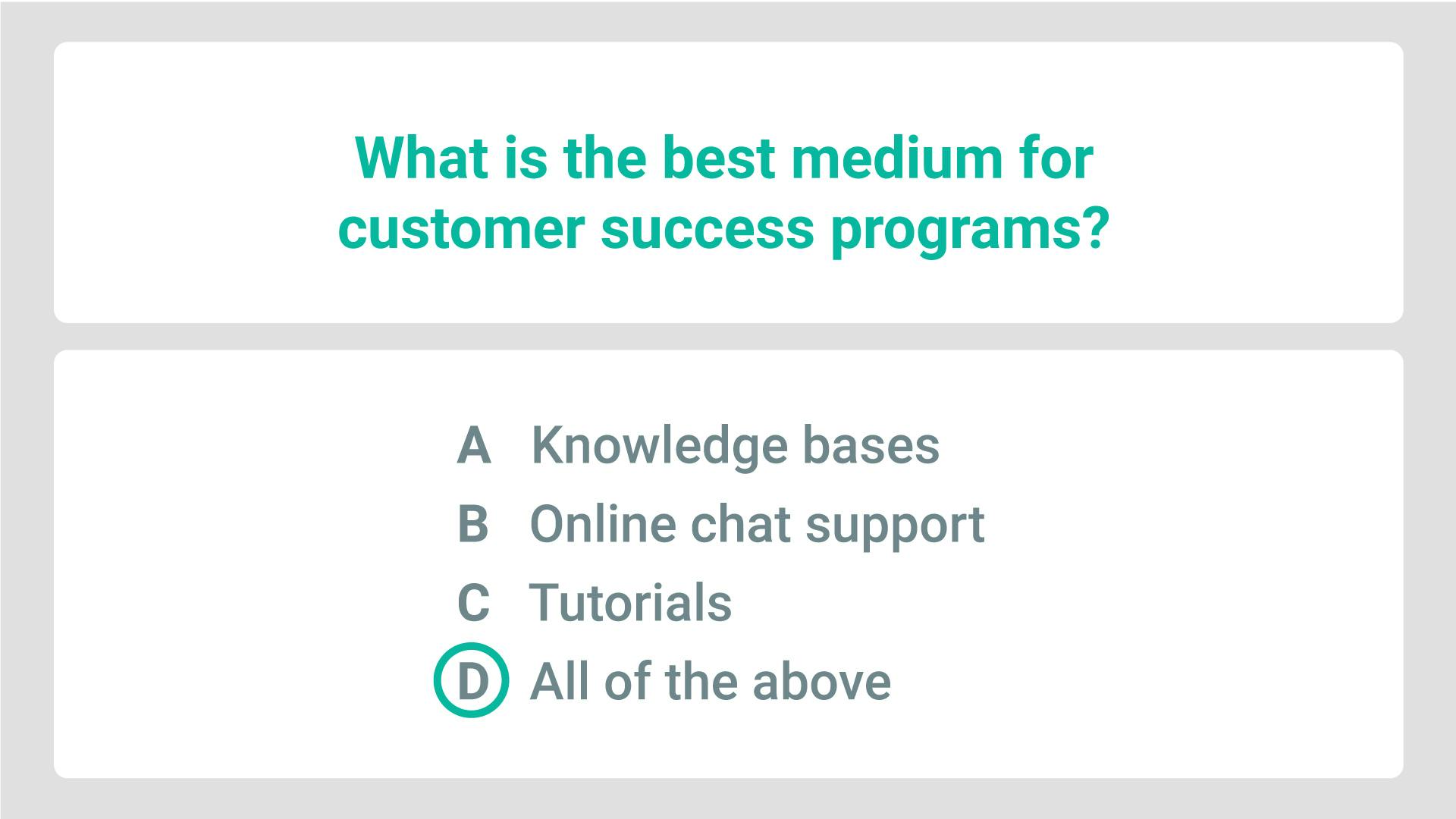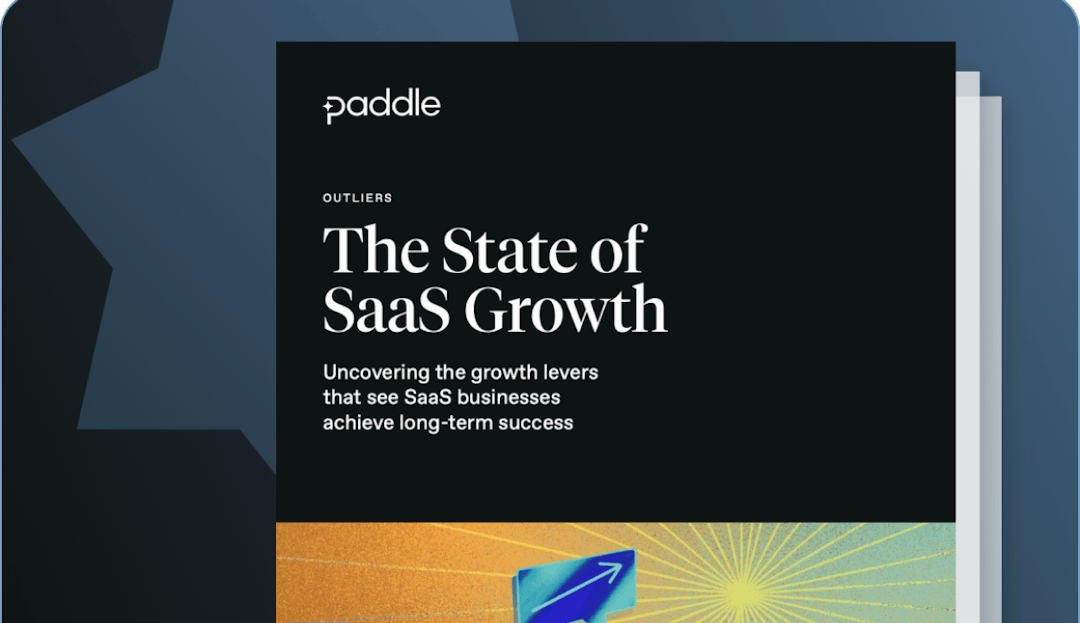If a customer struggles to use your SaaS product, then they're unlikely to feel that it's a good value/fit for them. It's in the best interest of every SaaS company to ensure its customers are able to understand and make the most of its products. The best way to do that is with a thorough customer success program.
What is a customer success program?
A customer success program is a focused effort by a company to ensure that its customers are able to successfully use its products. This can come in many forms, but usually consists of dedicated representative support, knowledge-base articles to help customers who are having difficulty, and a thorough tutorial system in place that explains the ins and outs of the software in an easy to digest way.
Are you prioritizing customer success?
If you are not putting an effort into maximizing your customer success, then you are losing more customers than you need to. Customer success programs are one of the most vital aspects of keeping your KPIs where you want them while operating a SaaS business. Here are some of the metrics that you can expect to see improvement on when you begin to prioritize customer success:
Lower churn rates
Customers who subscribe to your SaaS product to achieve a goal and succeed, are far less likely to leave the service. Those who struggle are going to quickly begin evaluating your competitors in the hope of better outcomes.
Higher ARPU
Customers who get significant value from your product aren't just going to increase your ARPU by sticking around longer. Happier customers are more likely to respond to an upsell or cross-sell and increase the amount of money that they give you each month.
Greater LTV
By improving your customer experience and increasing the lifecycle of that customer, you'll be increasing the overall lifetime value of that customer as well.
Common customer success program mediums
Now that we've given you an overview of what a customer success program is and explained its benefits, let's take a look at how companies actually realize a customer success strategy. This is a list of the most common methods used by a customer success team to aid in customer retention. Though there may be other methods that are unique to your product or business model. So, it's important to think in depth about your specific customers and the challenges they face.
Knowledge bases
A knowledge base is a searchable online collection of documents and articles that will help a customer understand your product better. This should include any tutorials that you have created, frequently asked questions, product documentation, as well as important product announcements.
Online chat support
Customers who have specific problems will need and want immediate assistance. And while it is nice to have email-based support that the customer can rely on, people want immediate gratification. More importantly, if a customer is on a deadline, they might not have time to wait for your email support to respond. If they miss a deadline because of a problem, they may move on to other companies. Live chat support can prevent that.
Tutorials
Reading documentation is dry and not a very effective way to learn. Tutorials, usually in the form of screencast videos, are a great way to explain all of the features of your product to customers who are trying to learn. You should also link customers to these tutorials as part of the onboarding process so they can hit the ground running.
All of the above
These are not options that you want to pick and choose between. The best scenario is that you have all of these elements in place so that your customers can find help regardless of what their problem is and when it arises.

The metrics worth tracking for customer success
We've shown you the metrics that a customer success program can improve, but what about the metrics that you use to gauge the success of the program? By keeping an eye on these four metrics, you can guarantee that your customers are getting the most of the software and won't be tempted off to "greener" pastures.
Daily active users (DAU)
A customer that is using your product every day is very likely to be satisfied with the results. By tracking your daily active users over time, you can see how many of your customers are engaging with your product on a daily basis and what direction that metric is trending in.
Net promoter score (NPS)
Your net promoter score is a direct rating of your product by the customers. There is perhaps no better way to gauge how satisfied they are than by the NPS. It is especially beneficial if you have a customer feedback portion of the survey so you can identify pain points from the customers themselves.
Time in app
his is similar to the daily active users metric. If your customers are only using your product for a few minutes at a time, then they are very likely to churn. Of course, the exact amount to worry over depends on the nature of your product. You know better than anyone how long a reasonable session is.
Cost to acquire (CAC)
How much is it costing you to acquire users? If your LTV is low because of unsatisfied customers, then having a high CAC is a recipe for disaster. You'll either be losing money or you'll need to constantly acquire new customers just to break even. Neither of these situations is very sustainable in the long run.
How to build a bulletproof customer success program
It isn't just enough to know what elements make up a good customer success program and how to track its effectiveness. You have to know what goes into those elements to ensure your customer relationship is where it needs to be to keep them coming back. By following the six steps below, your customer success manager can build a rock-solid program.
Create content
You may have an initial set of tutorials or articles, but as questions roll in from customers about how to perform a certain task, or as your own staff comes up with new and exciting ways to use your product, you should be creating new content based on that information. Many companies also host regular live streams where knowledgeable members of staff answer questions on a particular topic while demonstrating how to perform a task related to that topic.
Enable live chat
Your customer support likely isn't working 24/7, but whatever time it is, there are customers trying to use your product. Services like Intercom allow you to set up chatbots that will be there to help your customers with basic tasks, long after your human staff has gone to sleep. Anything you can do to reduce the wait time between a customer having a question and getting the answer is worth doing.
Input help links
You should link customers to all of the ways in which they can get help as part of the onboarding process, but don't rely on them keeping that email around in case they need to find the information later. There should be prominent links to all of the resources available for customer success in the interface of your product so that customers can easily access when searching for answers.
Set up metric tracking
As we've shown, tracking key metrics related to customer success is a vital part of understanding how your program is performing. In order to do that, you'll need to set up some form of analytics. ProfitWell Metrics is a free solution that will provide you with the tools you need to track the progress of your customer success program, as well as the overall health of your SaaS business.
Configure your knowledge base
A knowledge base is essentially just an organized collection of the type of content that you've already created thus far. Put your tutorials, documentation, live chat agent links, and other information related to your product into a good knowledge base product. Make sure that the link to it is easily visible, so customers can immediately find it when needed.
Step in when you see a problem
If your metrics tell you that an individual customer is using the product significantly less than they used to, or engaging with it for a significantly shorter amount of time, then that customer may be having trouble. Not everyone will reach out for help when they need it, so it's a good idea to reach out to that customer on your own, and ask if there is anything you can do to make their experience with your product a better one.
Kill churn with Paddle Retain
Every SaaS business can benefit from reducing churn. Paddle Retain is one of the best tools that you can use to reduce churn and win back customers. We made Retain PCI compliant so it can work for you even if you are under the strictest of security requirements. We also made it easy to use, because that's the way software should be. Finally, to sweeten the deal, our payment plan is set up so that we only make money once we've raised your retention rates. We invite you to take a look at Retain and then put it to work for you.
Conclusion
Churn is one of the biggest problems facing SaaS companies. Keeping customers around and satisfied takes the stress off of nearly every department in your organization. The best way to do that is by monitoring your customer health with products like ProfitWell Metrics and using more advanced tools like Retain to keep your customers happy and on your side. Without a customer success program in place; however, that job becomes much more difficult. The key to looking after your business is looking after your customers.




